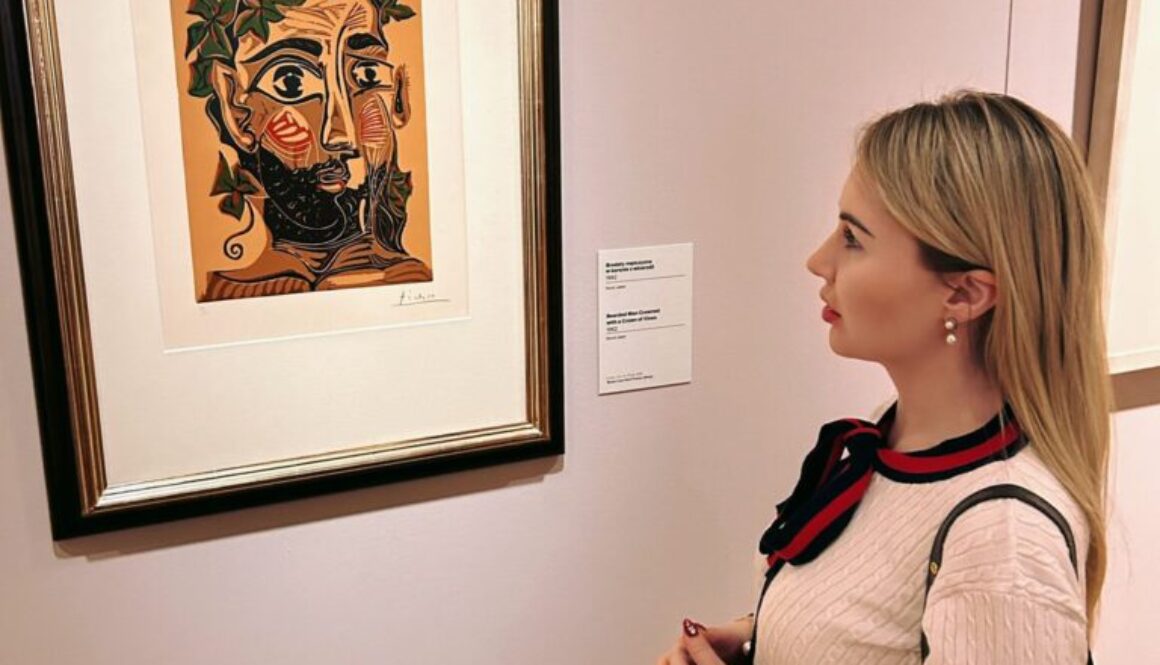Picasso’s Kaleidoscopic Brilliance Unveiled: Navigating the Depths of Artistic Revolution at the National Museum of Poland
Through the Kaleidoscope of Genius: Deconstructing Picasso in the National Museum of Poland
Pablo Picasso, a name synonymous with artistic revolution, casts a long shadow across the annals of art history. His prolific brushstrokes, imbued with an insatiable hunger for creative metamorphosis, continue to ignite passionate discourse and philosophical introspection. In Warsaw’s National Museum, a captivating exhibition currently offers a glimpse into the multifaceted brilliance of this artistic titan, inviting us to delve into the depths of his visual tapestry.
From the outset, the exhibition transcends mere chronology. Instead, it curates a thematic constellation, each section a prism refracting Picasso’s genius through a distinct philosophical lens. We encounter, firstly, his Reflections on Beauty. Here, Cubist deconstructions like “Woman with a Mandolin” (1910) shatter the classical ideal, reassembling fragments of reality into a mosaic of subjective perception. Beauty, Picasso seems to whisper, is not a fixed entity, but a kaleidoscope of shifting perspectives.
Moving on, we find ourselves amidst Mythological Metamorphoses. Creatures like fauns and centaurs cavort across canvases, embodying Picasso’s exploration of primal instincts and the duality of human nature. The Minotaur, a recurring motif, becomes a potent symbol of the artist’s own inner labyrinth, his struggles with desire and reason laid bare on the canvas.
In the Ceramic Interlude, functionality surrenders to artistic whimsy. Plates morph into expressive landscapes, and pitchers sprout whimsical faces, revealing Picasso’s boundless creative spirit and his playful defiance of artistic boundaries. This section is a testament to his insatiable curiosity, a testament to his ability to breathe life into the most mundane objects.
Finally, we arrive at Polonica, where the threads of Picasso’s personal connection to Poland are woven into his artistic tapestry. Portraits like “Polish Girl” (1948) bear a poignant tenderness, while other works resonate with the echoes of war and resilience. This section underscores the universality of Picasso’s art, its ability to transcend geographical borders and speak to the shared human experience.
But the true magic of the exhibition lies not just in the individual works, but in the dialogue they spark. Each brushstroke, each fragmented form, invites us to question our own perceptions, to grapple with the very essence of art and its relationship to reality. Is it a mirror reflecting the world, or a prism refracting it through the artist’s subjective lens? Does it strive for mimesis or transcend it, forging its own unique language?
As we navigate the labyrinthine corridors of the exhibition, we become co-creators, our own interpretations adding hues to the artist’s palette. Picasso, the consummate provocateur, compels us to abandon the comfort of certainty and embrace the ambiguity of the artistic experience. He invites us to dance on the precipice of meaning, to revel in the joy of questioning, the thrill of the unknowable.
So, dear reader, if you find yourself in Warsaw, do not hesitate to step into this portal to Picasso’s genius. Let the National Museum be your canvas, and his paintings your brushstrokes. Deconstruct, analyze, question, and above all, surrender to the intoxicating beauty of a mind that dared to reimagine the very essence of art. For in the kaleidoscope of Picasso’s paintings, you might just discover a reflection of your own creative spark.
Remember, art is not a spectator sport. It is a conversation, an invitation to participate in the eternal dance of creation. So, step into the National Museum, and let Picasso’s brushstrokes guide you on a journey into the boundless depths of your own imagination.
I hope this blog has piqued your interest in Picasso and his captivating works in the National Museum of Poland. Feel free to share your own thoughts and interpretations in the comments below. Let’s keep the conversation about art alive!
Let’s chat and Explore the Depths of Artistic Revolution at the National Museum of Poland.

